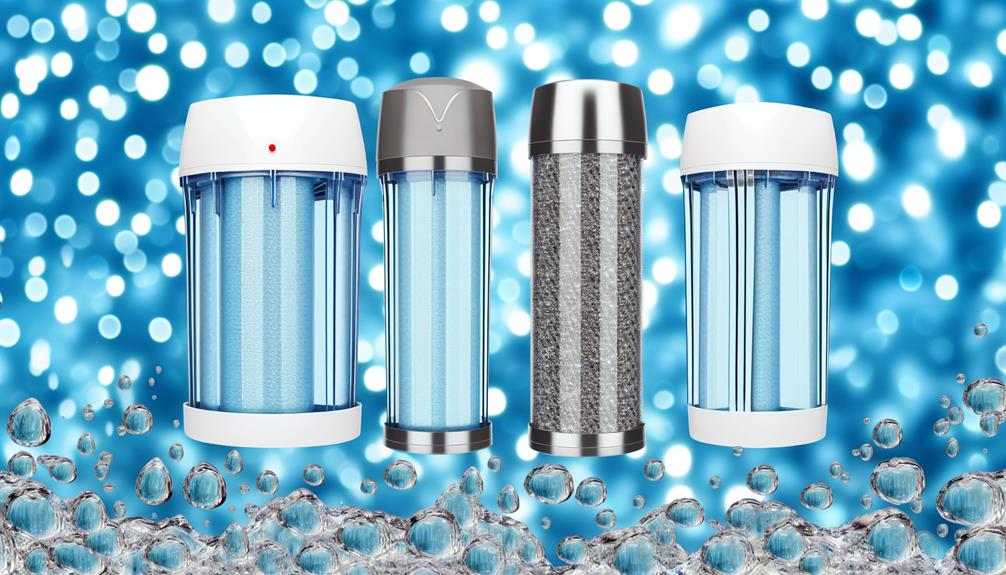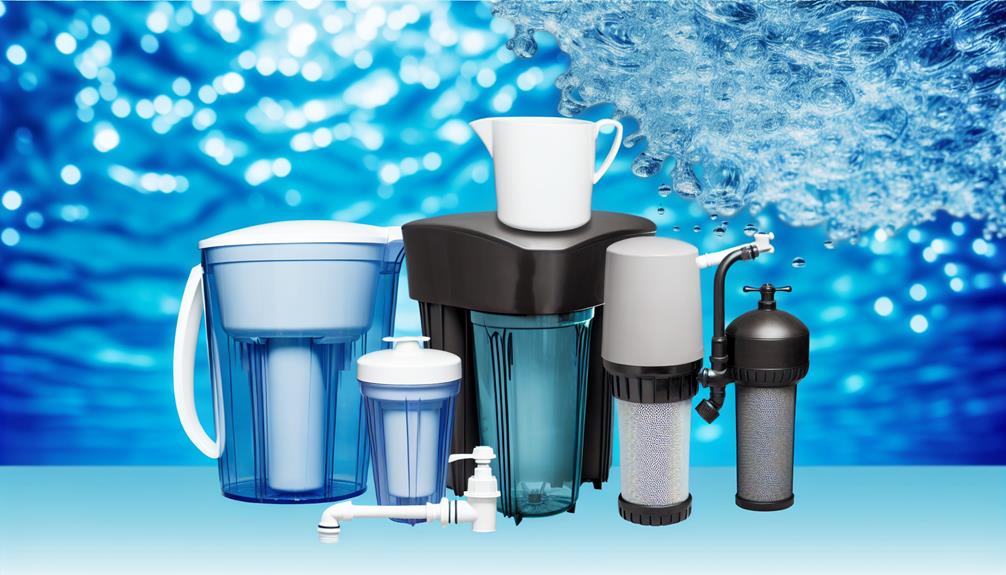When it comes to ensuring your water is free from unwanted guests, particularly arsenic, you might find that your budget doesn't always align with the high-end solutions on the market. You're not alone in this challenge.
Budget-friendly arsenic filtration systems offer you a viable option to protect your health without draining your wallet. These systems are not only cost-effective, but they're also known for their ease of use and straightforward maintenance.
You have to wonder, though, can these affordable options really stand up to the task of filtering out such a harmful contaminant effectively? As you consider the safety of your drinking water, the question of balancing costs with efficiency lingers, suggesting a deeper exploration into the world of budget-friendly arsenic filtration might just be worth your while.
Arsenic Health Risks Explained
Understanding the health risks associated with arsenic exposure is crucial, as long-term consumption can lead to severe conditions such as cardiovascular disease, cancer, and skin lesions. Arsenic contamination in drinking water, a pressing global issue, poses significant health problems that demand your attention.
Exposure to this toxic element, primarily through contaminated water, can result in arsenic poisoning, which is characterized by a range of acute and chronic health effects.
Your risk of developing chronic arsenic poisoning increases with the concentration of arsenic in your water and the duration of exposure. The ingestion of arsenic over extended periods has been linked to an enhanced risk of various cancers, including skin, bladder, and lung cancer. Moreover, cardiovascular disease can be exacerbated by continuous low-level exposure, potentially leading to heart attacks or strokes.
Given the gravity of arsenic health risks, especially in rural areas of countries like Bangladesh and certain regions of the United States, such as Arizona and New Mexico, it's imperative to seek effective filtration solutions. Engineers at the University of Missouri's innovation presents you with a cost-efficient filter, designed for household use, capable of significantly reducing arsenic levels in your water supply. This technology could be your key to safeguarding your health against the dangers of arsenic contamination.
Testing for Arsenic in Water
Recognizing the severe health consequences of arsenic exposure, it's essential that you regularly test your water, particularly if sourced from a well, to ensure safety and take necessary action. Due to the widespread contamination of arsenic in natural water sources, testing for arsenic in water isn't just a precaution; it's a critical step in safeguarding your health.
When assessing arsenic levels, it's important to understand that the U.S. Environmental Protection Agency has set the arsenic standard for drinking water at 10 parts per billion (ppb) to protect consumers. Testing kits are available, which can be used at home or sent to a laboratory for more detailed analysis. These tests provide an accurate measure of the arsenic concentration, enabling you to determine if the levels are within safe limits.
If your water tests above 10 ppb, it's crucial to explore arsenic mitigation solutions such as ion exchange, reverse osmosis, or distillation. These methods are effective in reducing arsenic content to acceptable levels. Regular monitoring is necessary since well water is particularly prone to arsenic contamination. Collaborative efforts with local agencies and adherence to recommended practices will enhance the effectiveness of your arsenic filtration strategy, ensuring you and your family have access to safe drinking water.
Cost-Effective Filtration Technologies
To mitigate the health risks posed by arsenic in drinking water, exploring budget-friendly filtration technologies is imperative. You're likely seeking solutions that balance efficacy and affordability, and current advancements are promising.
Low-cost water filters, like those developed by the University of Missouri, have demonstrated practical budget considerations while ensuring effective arsenic removal for household use. These filters aren't only accessible but also perform well compared to more expensive, commercially available alternatives.
Cost-effective technologies such as the two-material approach streamline production, reducing costs without compromising on performance. By using combinations of inexpensive materials, these filters offer a budget-conscious solution for arsenic removal.
Moreover, biochar filtration, utilizing readily available materials like hickory chips, represents an innovative, cost-effective method suited for both water treatment plants and home use. It's a prime example of how locally sourced materials can be transformed into powerful filtration tools.
Additionally, the Arseniron Nilogon technology from Tezpur University stands out as a patented, low-cost method for removing both arsenic and iron. It's a testament to how academic research can translate into real-world applications that meet the practical budget needs of communities affected by water contamination.
Arsenic System Installation Guide
Having explored cost-efficient filtration technologies, let's focus on how you can install an arsenic removal system in your home effectively and economically. The innovative filter design developed by engineers at the University of Missouri offers a budget-friendly solution to this global health concern, particularly valuable in rural areas with high arsenic levels in drinking water.
To ensure you're equipped with the knowledge for a successful installation, follow this arsenic system installation guide:
- *Identify the optimal location*: Your system should be easily accessible for maintenance and close to the main water supply line.
- *Gather necessary tools and materials*: Before you begin, ensure you have all components, including the two-material filter, piping, and fittings.
- *Follow technical specifications*: Adhere strictly to the manufacturer's guidelines to avoid any mishaps or system failures.
- *Test the system post-installation*: To confirm effectiveness, perform a water quality test for arsenic levels before and after installation.
Maintenance of Arsenic Filters
Ensure your arsenic filtration system continues to operate efficiently by conducting regular inspections for signs of damage or wear. This proactive approach is critical in sustaining the effectiveness of your budget-friendly arsenic filtration solutions. Diligent maintenance of arsenic filters not only preserves their longevity but also ensures that your water remains safe for consumption.
Adhere strictly to the manufacturer's guidelines concerning the replacement of filter materials. These components are your first line of defense against arsenic contamination, and timely replacement is non-negotiable for maintaining water quality. Letting the filters exceed their recommended usage period could compromise the system's integrity and your health.
Cleaning the filter components according to the provided instructions is another pillar of effective maintenance. This step prevents the buildup of contaminants and preserves optimal filter performance. Neglecting this can lead to reduced efficiency and potentially allow arsenic to slip through untreated.
Additionally, monitor your system's performance through periodic water quality tests. These tests will confirm whether arsenic levels remain within safe limits, offering you peace of mind and signaling when maintenance tasks are due.
Lastly, keep a detailed maintenance schedule. This organizational tool is pivotal in achieving consistent and reliable arsenic removal, safeguarding your drinking water without fail.

